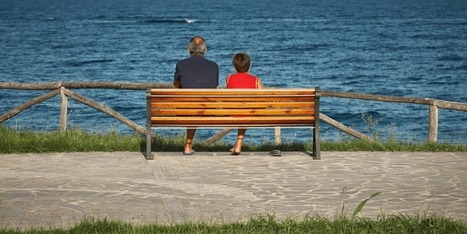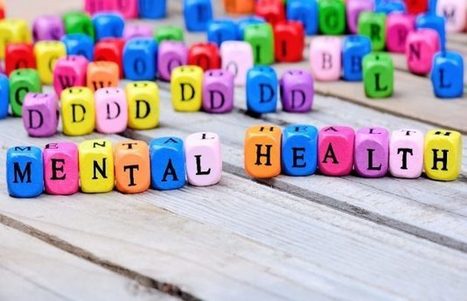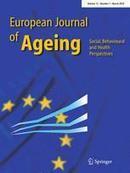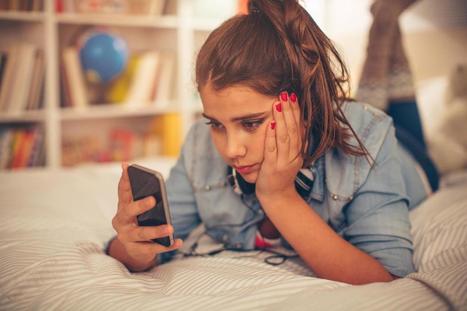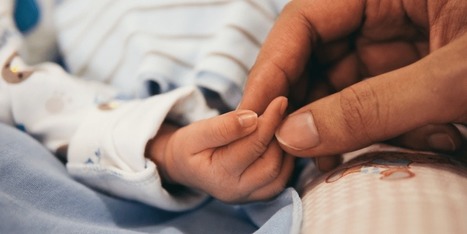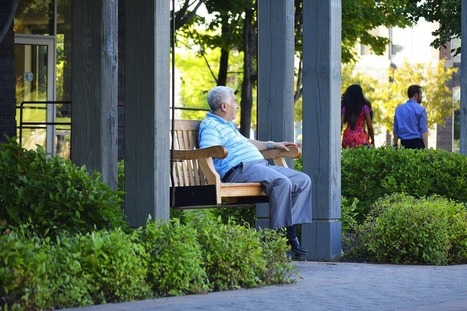 Your new post is loading...
 Your new post is loading...
This seminar combined presentations of findings from two research projects focusing on consumption of alcohol across the life course. The first project looked at drinking in adolescence, and the second considered the health implications of drinking across the life course. Speakers Yvonne Kelly (Professor of Lifecourse Epidemiology at UCL) has published extensively over the past 20 …
Working for longer is something we are all having to get our heads around. It’s certainly a priority for the Government, which wants to encourage more older people into satisfying jobs that will he…
Adverse Childhood Experiences (ACEs) have been a hot topic for policy work in child health and development in recent months. The Select Committee for Science and Technology announced an inquiry int…
Who is most at risk of leaving work due to poor health? In a major international research project, Ewan Carr from the renEWL team has worked with colleagues at UCL, King’s College and Queen Mary Un…
The Burberry model – alongside a growing number of Asian women – are speaking out against colourism and prejudiced notions of beauty
We are living in an era of ageing populations. Making connections with other people is said to promote the mental health and longevity of older people. In this seminar, Dr Shankar will address loneliness in older people living in England, some of the factors affecting loneliness in later life, and...
Many developed nations seek to increase older people’s work participation. Work and family are linked to paid work in later life, and to each other. Few studies combined work and family histories...
The National Perinatal Epidemiology Unit (NPEU) is a multidisciplinary research unit based at the University of Oxford. Our work involves running randomised controlled trials, national surveillance programmes and surveys, confidential enquiries, aetiological studies and a disease register.
Being hangry, FGM trial, youth and digital technology, Sport Relief and Charlotte Dujardin...
Written evidence submitted by ESRC International Centre for Lifecourse Studies in Society and Health (ICLS) (SMH0128) Submitted by: Professor Amanda Sacker, ESRC International Centre for Lifecourse Studies, University College London Professor Yvonne Kelly, ESRC International Centre for Lifecourse Studies, University College London Dr Cara Booker, Institute for Social and Economic Research, University of Essex Overview 1.1. In a recently published research paper, we examined gender differences in the associations between the trends in social media interactions and well-being among 10-15 year olds in the UK. 1.2. The impacts of social media interactions on well-being of children over time are neither well researched nor well understood. Our research hints at the need for interventions to protect and promote the well-being of young people, particularly girls, who our research indicates are more likely to become over- dependent on ‘likes’ and comments and, in the words of the Children’s Commissioner for England, start “adapting their offline lives to fit an online image”, something she believes can lead to an anxiety about ‘keeping up appearances’ as they get older. Key findings At age 10, 50 per cent of girls and 55 per cent of boys said they had no internet access or spent no time on social media. At 15 years, this dropped to 8 and 10 per cent respectively. Ten per cent of ten year-old girls reported spending one to three hours a day (compared with 7 per cent of boys) and this increased to 43 per cent of girls at age 15 (and 31 per cent of boys). At age 10 only a very small per cent of girls/boys were spending 4 hours plus a day on social media. But by the age of 15, that rose to 16 per cent of girls and 10 per cent of boys. For both boys and girls, levels of happiness decreased between the ages of 10 and 15, however the decrease was greater for girls than for boys. Additionally, whilst emotional and behavioural problems increased for girls between the ages of 10 and 15, they decreased for boys. 10 year-old girls who spent an hour or more on a school day chatting online had more emotional and behavioural problems than girls of the same age who spent less or no time on social media. In addition, the number of problems increased as they got older. Data Our information came from five waves of the UK’s largest household survey, Understanding Society, which interviews all members of households aged 10 and over annually. In total our sample was nearly 10,000 young people aged 10-15. They were asked: 1. If they belonged to a social web-site and then how many hours they spent ‘chatting’ or ‘interacting with friends’ on a normal school day. They could select a range of responses from none to more than 7 hours. 2. About satisfaction with schoolwork, friends, family, appearance, school and life as a whole and this was used to create an overall happiness score. 3. About any emotional and behavioural difficulties they might be facing using the well-established Strengths and Difficulties Questionnaire (SDQ) with a higher score indicating more problems. Comments It is difficult to unpick why girls are more affected than boys but we believe it may say something about the different ways in which boys and girls interact with social media. Girls may be more likely than boys to compare their lives with those of friends and peers and these could lead to feelings of inadequacy, lower levels of satisfaction and poorer wellbeing. Boys may be more likely to be gaming (not covered here) rather than interacting on sites such as Facebook and Snapchat and changes in their wellbeing could be more related to gaming success or skill. Recommendations Our evidence adds weight to recent calls for the technology industry to look at in-built time limits. Interventions (peer/parent/school-led) focused specifically on young girls as they prepare to move to senior school could be important Helping young girls understand the positives and the negatives of time on social media Additional links April 2018
There have been increasing calls in recent months for more to be done to prepare children for the emotional demands of social media. Just a few weeks ago, the Government’s Science and Technology Committee announced an inquiry into the impact of social media on the health of young people. But do girls and boys use social media as much as each other and is all this time spent Facebooking, Whatsapping and Snapchatting having a detrimental effect on their happiness and well-being? Cara Booker from the University of Essex, in collaboration with collleagues from UCL, has been looking at trends in social media interaction and well-being in nearly 10,000 10-15 year-olds in the UK over a 5 year period. Their findings indicate that girls may be at greater risk and therefore a focus for those looking to intervene to protect and promote children’s happiness. The Government’s inquiry into the impact of social media on the health of young people comes hard on the heels of a report from the Children’s Commissioner for England, which says that children between the ages of 8 and 12 find it hard to manage the impact of online life and become anxious about their identity as they crave ‘likes’ and comments for validation. An explosion in digital and social media platforms has revolutionised the way we all consume media with a recent report showing that young people aged 12-15 spending more time online than they do watching TV. Indeed, it seems a long time ago that parents’ prime concern around media was how much or what kind of TV their child was watching. All these major developments have taken place at a time when we also know that young people are becoming less and less happy. In the most recent United Nations Children’s Fund report, UK adolescents are ranked in the bottom third on overall well-being, below Slovenia, the Czech Republic and Portugal. Of course, it’s important to remember that the internet has done a great deal of good for children: connecting them with friends and family who may be far away, providing great opportunities to widen horizons and learn new things. These things have been shown in other studies to be linked with increased levels of happiness and well-being in children On the negative side, social media use has been linked with obesity, cyberbullying, low self-esteem and lack of physical activity, all things that can affect the lives of children as they move through school and into adulthood and work. Social media experiences Young people who took part in the Understanding Society survey, were asked if they belonged to a social web-site and then how many hours they spent ‘chatting’ or ‘interacting with friends’ on a normal school day. They could select a range of responses from none to more than 7 hours. At age 10, 50 per cent of girls and 55 per cent of boys said they had no internet access or spent no time on social media. At 15 years, this dropped to 8 and 10 per cent respectively. Ten per cent of ten year old girls reported spending one to three hours a day (compared with 7 per cent of boys) and this increased to 43 per cent of girls at age 15 (and 31 per cent of boys). At age 10 only a very small percent of girls/boys were spending 4 hours plus a day on social media. But by the age of 15, that rose to 16 per cent of girls and 10 percent of boys. Levels of happiness � � Young people who took part in the survey were asked about satisfaction with schoolwork, friends, family, appearance, school and life as a whole and this was used to create an overall happiness score for them. They were also asked about any social and emotional difficulties they might be facing using the well-established Strengths and Difficulties Questionnaire (SDQ) with a higher score indicating more problems. For both boys and girls, levels of happiness decreased between the ages of 10 and 15, however the decrease was greater for girls than for boys. Additionally, whilst SDQ scores increased for girls between the ages of 10 and 15, they decreased for boys. 10 year-old girls who spent an hour or more on a school day chatting online had higher SDQ scores (more social and emotional problems) than girls of the same age who spent less or no time on social media. In addition, the score (number of problems) increased as they got older. Why the gender difference? So why the gender difference? This is hard to unpick and not something we were able to look at specifically in our research. It may say something about the different ways that girls and boys interact with social media. For example, girls may be more likely than boys to compare their lives with those of friends and peers – whether those are ‘filtered’ selfies or positive posts about friendships, relationships or material possessions – these could lead to feelings of inadequacy, lower levels of satisfaction and poorer wellbeing. The pressures associated with having peers like or ‘approve’ status updates and a perceived fall in or lack of popularity could add further pressure at, what for many teenagers is a tricky time in their lives. Boys are more likely to be gaming than interacting online in the way just described and that wasn’t covered in this research, so it’s possible that changes in well-being may be more related to gaming success or skill. What needs to change? It’s clear that social media is no short-lived phenomenon and our research indicates that girls, possibly because of the way in which they interact online and the amount of time they spend doing so could be at greater risk. In her report, A Life of Likes, the Children’s Commissioner Anne Longfield has called for more to be done to check and stop underage use and to prevent children becoming over dependent on likes and comments and “adapting their offline lives to fit an online image”, something she believes can lead to an anxiety about ‘keeping up appearances ‘ as they get older. Our research really adds weight to recent calls for the technology industry to look at in-built time limits. Young people need access to the internet for homework, for watching TV and to keep in touch with their friends of course, but a body of evidence is emerging to show that substantial amounts of time spent chatting, sharing, liking and comparing on social media on school days is far from beneficial especially for girls. Gender differences in the association between age trends of social media interaction and wellbeing among 10-15 year olds in the UK, is research by Cara Booker (University of Essex), Yvonne Kelly (University College London) and Amanda Sacker (University College London) and is published in BMC Public Health.
GIRLS who use social media sites like Instagram at ten are more likely to suffer emotional problems in their teens, a study found. Those who spent longest chatting online were most likely to become unhappy with school work, body image and friends. But boys who spent lengthy periods using social media did not suffer, researchers at the University of Essex and University College London say. While lads do become unhappier in their teens, experts believe this is probably due to computer games. Half of girls and a third of boys are online for more than one hour a day at 13. This rises to 59 per cent and 46 per cent at 15, the survey of 9,859 British youngsters reveals. MOST READ IN HEALTH NEWS BATTLE FOR LIFE Toddler's leg amputated after 'cold' revealed as potentially-deadly sepsis 'NOT JUST A RASH' Mum reveals harrowing pics of son 'at death's door' battling meningitis SUGAR AND PRICE What is the UK sugar tax, when will the price of fizzy drinks increase PLEASE YOUR LOVER There are 237 reasons why we have sex — but most of us do it 'for fun' GENDER AGE GAP Men could live as long as women for the first time by 2032, experts claim KOALATY ADVICE These are the UK hotspots where Aussie flu struck during the winter Some 16 per cent of girls and ten per cent of boys spend four hours a day or more on sites like Instagram, Twitter and Snapchat at 15. Happiness scores fell from 36.9 to 33.3 in girls between ten and 15 and from 36.02 to 34.55 in boys. Study leader Dr Cara Booker from the University of Essex said: “Our findings suggest that it is important to monitor early interactions with social media — particularly in girls. “Their social media use could have an impact on wellbeing later in adolescence and perhaps throughout adulthood.” Dr Bernadka Dubicka, from the Royal College of Psychiatrists, said: "I am sure that social media plays a role in unhappiness. "There’s a pressure for young people to be involved 24/7 and to keep up with their peer group online, or they will be left out and socially excluded. "But we must remember that social media also has its benefits, particularly in its ability to provide young people with a platform from which to build networks and keep connected. "We need to teach children how to cope with all aspects of social media – good and bad – to prepare them for an increasingly digitised world." Kim Kardashian shows off adorable baby Chicago in sweet video We pay for your stories! Do you have a story for The Sun Online news team? Email us at tips@the-sun.co.uk or call 0207 782 4368
Cara Booker’s profile on The Conversation...
|
How strict are YOU on bedtimes?
There are lots of reasons why people end their working lives early, and the relationships between those reasons are complex. We know, for instance, that if you’re a carer for someone close to you, …
Across the developed world, people are living longer. In response to this, governments are looking for ways to encourage people to work for longer. In the UK, the State Pension age is being raised …
Fifty years on from the UK’s first piece of legislation outlawing racial discrimination in employment, Stephen Ashe & James Nazroo look at what’s changed and whether racism in the workplace needs to be looked at in a different light. It has been shown repeatedly that reoccurring exposure to racism has serious negative long-term effects on people’s mental health. Over the past 12 months, Theresa May has warned public services there will be “nowhere to hide” if they treat people differently on the basis of their race. Yet the latest research suggests that the existing legislation isn’t doing enough to improve the situation. Is it time to start thinking about workplace racism, not just as an equality and diversity issue, but also as a serious matter of health and safety? Impact of racism in the workplace The Trade Union Congress’ (TUC) 2016-2017 Racism at Work survey is the latest piece of research to confirm that workplace racism has a considerable impact on people’s physical and mental health. This raises an important question: should workplace racism also be considered an issue of health and safety rather than just falling under the remit of equality and diversity? Of the 5,191 people who took the TUC’s survey, over half of those from an Asian, Black or Mixed heritage background reported that workplace racism had a negative impact on their mental health. At the same time, more than a quarter participants from an Asian, Black or Mixed heritage background reported that workplace racism had a negative impact on their physical health, while a similar number said that workplace racism had led to them taking sick leave. What is more, over one in ten non-white respondents reported that they had experienced racist violence at work. The multiple and cumulative effects of workplace racism are powerfully captured in the following statement provided by a TUC survey participants: I’ve had three workplaces where I’ve had to bring grievances that were race related (racist in nature)…You can never absolutely prove it…It’s insidious. The ignoring you is as bad as the shouting at you…I ended up on anti-depressants and suicidal. It makes you forget who you are, your strengths, your abilities. I’m a skilled intelligent woman who’s worked for 35 years and I ended up barely able to send an email. It’s like the perpetrators don’t realise. Leaves you powerless. I’m having to leave my job and take a 10k wage reduction for a short-term post instead of my permanent one. It’s either that or my life. My children/family have insisted. They want me alive. The findings from the TUC survey support our analysis of the 2015 Business in the Community (BITC) Race at Work survey, which also found that workplace racism had a considerable impact on people’s emotional and psychological wellbeing. Some 24,457 people took part in the BITC survey, with more than 5,000 participants providing personal statements. When analysing these statements we similarly found that workplace racism had also resulted in a considerable number of people experiencing anxiety, stress and depression. Like the TUC survey, a significant number of BITC survey participants also reported being subjected to intimidation and racist violence at work. It is perhaps most worrying that many participants, across both surveys, reported that racism was a reoccurring part of their everyday working lives. This is particularly disturbing given that recent research by colleagues in the Centre on Dynamics of Ethnicity has shown that repeated exposure to racism has serious negative long-term effects on people’s mental health. Existing legislative landscape Fifty years ago Harold Wilson’s Labour government amended the 1965 Race Relations in order to outlaw racial discrimination in employment for the first time. Some 33 years later, the 2001 Race Equality Duty placed the first ever legal obligation on public authorities to positively promote equality rather than simply avoiding discrimination. And yet, racism and racial inequality are still staple features of the British economy. According to the Health and Safety Executive, the Health and Safety at Work Act 1974 and The Management of Health and Safety at Work Regulations 1999 stipulate that ‘Employers must do whatever is ‘reasonably practicable’ to ensure ‘that workers and others are protected from anything that may cause harm, effectively controlling any risks to injury or health that could arise in the workplace’. As our colleague Tarani Chandola also recently argued, anti-discrimination statutes are ‘potentially’ implicated in cases related to work stress, notably the Protection from Harassment Act 1997 and the Equality Act 2010. Following on from the PM’s Race Disparity Audit, the recent announcement that £90 million will be made available to address racial inequality in youth unemployment is welcome. At the same time, it is profoundly disappointing that Margot James, Minister for Small Business, Consumers & Corporate Responsibility responded to the recent McGregor-Smith Review by stating that We believe that in the first instance, the best method is a business-led, voluntary approach and not legislation as a way of bringing about lasting change… We therefore… will monitor progress and stand ready to act if sufficient progress is not delivered. In light of the fact that it is fifty years since the Race Relations Amendment Act was introduced, forty years since the introduction of the Health and Safety at Work Act 1974 and 17 years since the introduction of the first public sector Race Equality Duty, the TUC and BITC surveys provide further compelling evidence that the existing legislative arrangements have not delivered ‘sufficient progress’. The TUC and BITC surveys suggest that the time for joined up thinking and consequential action is now, particularly in terms of ensuring the implementation of existing legislation is effectively monitored and enforced, and that employers are held to account. The Health Safety Executive has already noted that employers have a ‘duty to protect the health, safety and welfare of their employees‘. People have the right to go to work free from both the threat of racist violence and intimidation, as well as the impact racism has been proven to have on people’s physical and mental health. It is time to start thinking about workplace racism, not just as an equality and diversity issue, but also as a serious matter of health and safety. If you would like to share your experiences of workplace racism and the impact this has had on your physical and mental health, click here to take 2018 Race at Work survey. It takes around 13 minutes to complete the survey. All answers treated anonymously. Stephen Ashe leads the Centre on Dynamics of Ethnicity’s Racism at Work Project. James Nazroo is Professor of Sociology and Director of Centre on Dynamics of Ethnicity at The University of Manchester, researching inequalities in relation to later life, ethnicity and race, and health. Their report based on the 2016/2017 TUC Racism at Work Survey will be published later this month.
Social media use may have different effects on wellbeing in adolescent boys and girls, according to new research. Researchers found an association between increased time spent on social media in early adolescence (age 10) and reduced well-being in later adolescence (age 10-15) -- but only among...
Public health bodies put a lot of effort into encouraging mothers to breastfeed, and for good reasons.Successive studies have shown breastfeeding has a range of health benefits, including a lower …...
Social media use may have different effects on wellbeing in adolescent boys and girls, according to research published in the open access journal BMC Public Health. Researchers at the University of Essex and UCL found an association between increased time spent on social media in early adolescence (age 10) and reduced wellbeing in later adolescence (age 10-15) - but only among girls. Dr Cara Booker, the corresponding author said, “Our findings suggest that it is important to monitor early interactions with social media, particularly in girls, as this could have an impact on wellbeing later in adolescence and perhaps throughout adulthood.” The authors found that adolescent girls used social media more than boys and social media interaction increased with age for both boys and girls. At age 13, about a half of girls were interacting on social media for more than 1 hour per day, compared to just one third of boys. By age 15, both genders increased their social media use but girls continued to use social media more than boys, with 59% of girls and 46% of boys interacting on social media for one or more hours per day. Wellbeing appeared to decline throughout adolescence in both boys and girls, as reflected in scores for happiness and other aspects of wellbeing. Dr Booker said: “Since we did not observe an association between social media use and wellbeing among boys, other factors, such as the amount of time spent gaming, might be associated with the boys’ observed decline in wellbeing.” The study used data from the youth panel of the UK Household Panel Study - a large national survey which interviews all members of a household annually, from 2009 – 2015. A total of 9,859 UK adolescents aged 10 to 15 years completed questions on how many hours they spent interacting on social media sites on a typical school day. The researchers assessed wellbeing among this cohort using two measurements: a happiness score built from questions about how happy they are with different aspects of their life including family and school, and the Strengths and Difficulties Questionnaire (SDQ), which measures negative aspects of wellbeing such as emotional and behavioural problems. The authors found that throughout adolescence happiness scores dropped nearly three points from 36.9 to 33.3 in girls and two points from 36.02 to 34.55 in boys. While SDQ scores dropped for boys and increased for girls, indicating that girls experienced more negative aspects of wellbeing, the researchers concluded that overall wellbeing decreased for both. The authors caution that because the study used the self-report data and only social media interactions on school days were recorded, the associations between social media and wellbeing may have been underestimated. Ends Media Contact Lucy Eccles Communications Officer BMC T: +44 (0)20 3192 5730 E: lucy.eccles@biomedcentral.com Notes to editor: 1. Research article: Gender differences in the associations between age trends of social media interaction and wellbeing among 10-15 year olds in the UK Booker et al. BMC Public Health 2018 DOI: 10.1186/s12889-018-5220-4 The article will is available at the journal website. Please name the journal in any story you write. If you are writing for the web, please link to the article. All articles are available free of charge, according to BMC's open access policy. 2. BMC Public Health is an open access, peer-reviewed journal that considers articles on the epidemiology of disease and the understanding of all aspects of public health. The journal has a special focus on the social determinants of health, the environmental, behavioral, and occupational correlates of health and disease, and the impact of health policies, practices and interventions on the community. 3. A pioneer of open access publishing, BMC has an evolving portfolio of high quality peer-reviewed journals including broad interest titles such as BMC Biology and BMC Medicine, specialist journals such as Malaria Journal and Microbiome, and the BMC series. At BMC, research is always in progress. We are committed to continual innovation to better support the needs of our communities, ensuring the integrity of the research we publish, and championing the benefits of open research. BMC is part of Springer Nature, giving us greater opportunities to help authors connect and advance discoveries across the world.
Social media affecting girls’ wellbeing, says University of Essex research PUBLISHED: 12:55 03 April 2018 Sheena Grant Young people and youth problems. Preteen girl left alone at home, sends text messages with phone to friends. Concept of potential victim of cyber bulling and absence of parental control. Picture: Getty Images/iStockphoto Not so long ago, the most troubling thing the average 10 to 12-year-old had to do after school was work out how to juggle watching that night’s episode of Blue Peter with getting their maths homework done and perhaps fitting in an hour’s outside play with their friends. Times are no longer so simple. Earlier this year the Children’s Commissioner issued a stark warning in a report showing that modern 10 to 12-year-olds are becoming increasingly anxious about their online image and “keeping up appearances”. New research carried out in this region appears to back up those findings and raises concerns that social media seems to have the greatest negative impact on the wellbeing of girls who start using it as young as 10. These girls, using SnapChat, Whatsapp and other social media for more than an hour a day, are more likely to develop wellbeing issues by the time they are 15, according to a study by Dr Cara Booker at the Institute for Social and Economic Research at the University of Essex, working with researchers at University College London. The research, based on a survey of 9,859 UK adolescents aged 10 to 15, found adolescent girls used social media more than boys. By age 13, about half of the girls surveyed used social media for more than one hour a day on a typical school day, compared to one-third of boys. Social media use increased with age in both genders, but girls were still more prolific users than boys by the age of 15, with 59% of girls interacting on social media for an hour or more each day compared to 46% of boys. The study, published in the BMC Public Health journal, found that wellbeing declined throughout adolescence for boys and girls, but the drop was larger for girls. Researchers found that throughout adolescence happiness scores dropped nearly three points from 36.9 to 33.3 in girls, and two points from 36.02 to 34.55 in boys. Participants were assessed using a happiness score on different aspects of their lives including family and school. They also filled out a “strengths and difficulties” questionnaire measuring negative aspects of wellbeing such as emotional and behavioural problems. The study used data from the youth panel of the UK Household Panel Study between 2009 and 2015 - a large national survey which interviews all members of a household annually. Dr Booker said: “Our findings suggest it is important to monitor early interactions with social media, particularly in girls, as this could have an impact on wellbeing later in adolescence and perhaps throughout adulthood. “Since we did not observe an association between social media use and wellbeing among boys, other factors, such as the amount of time spent gaming, might be associated with the boys’ observed decline in wellbeing.” However, she said, the fact that social media use didn’t seem to have the same effect on boys’ wellbeing as that of girls could be something for future research to look at. “It could be down to differences in the types of people that girls and boys follow, types of content being put onto social media by girls and boys and also whether girls and boys feel different types of pressure to maintain their social media profile,” she added. “We hope this will be useful evidence for policy makers looking at whether time spent on social media is having an impact on health. There have also been calls for the technology industry to look at in-built time limits. Our study really backs this up - the amount of increasing time online is strongly associated with a decline in wellbeing in the young, especially for girls. Young people need access to the internet for homework, for watching TV and to keep in touch with their mates of course, but do they really need to spend one, two, three or four hours chatting, sharing and comparing on social media every school day?” Last year, Norfolk teenager Hannah Stone, then 16, spoke out about the effects social media had on her as part of a bid to tackle body image worries alongside the National Citizen Service. She said: “Instagram has been both poisonous and life-saving. On one hand, the media platform is centred on one’s image, and on the other, it allows me to connect with people in a similar position to myself but the pressure to present perfection (isn’t helpful). Before I post a photo on Instagram or Facebook I over-think it to the extent I often do not post the images I would like to. I think the worry is mainly caused by other people’s judgement, and the pressure from society to conform to an ‘acceptable’ image.” National Citizen Service research around teens and body image found that 58% of teens have experienced feelings of jealously, negativity and insecurity as a result of social media while feminist campaigner June Eric-Udorie, writing in the Guardian in 2015, said: “It’s becoming more and more obvious how the pressures of social media disproportionately affect teenage girls. I can see it all around me. Pressure to be perfect. To look perfect, act perfect, have the perfect body, have the perfect group of friends, the perfect amount of likes on Instagram. Perfect, perfect, perfect. And if you don’t meet these ridiculously high standards, then the self-loathing and bullying begins.” Meanwhile, the 2017 e-Safer Suffolk Cybersurvey found children are accessing social media before the minimum age limit; 80% of our 13-year-olds have a social media profile. According to more data collected from Understanding Society, the number of young girls using social media for more than three hours on an average school day has doubled in just four years.
Read more about Social media negatively affects teen girls more than boys on Business Standard.Social media use may have different effects on wellbeing in adolescent boys and girls, according to a recent research.Researchers at the University of Essex and UCL found an association between increased...
When studying the negative impact of social media, age has been considered a major determinant. But what about gender?
|



 Your new post is loading...
Your new post is loading...


